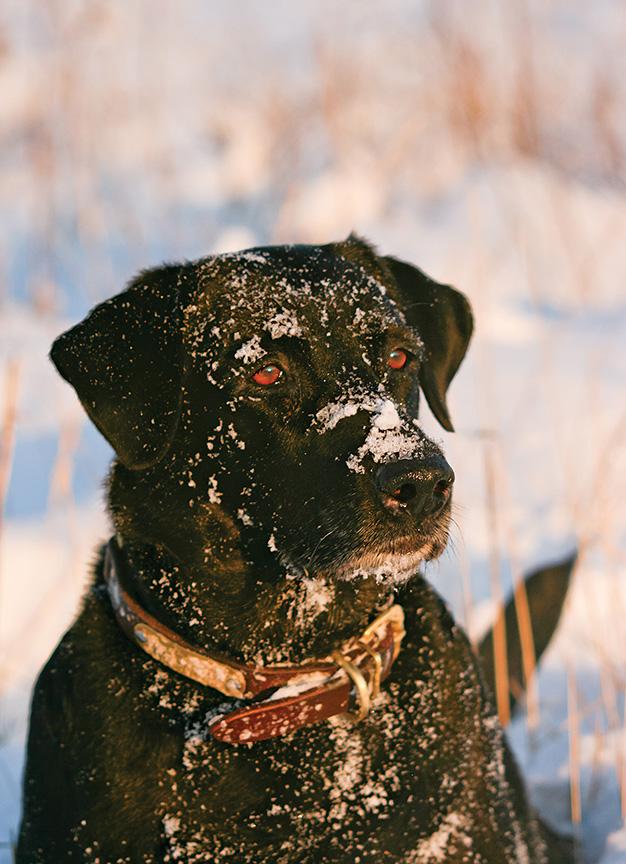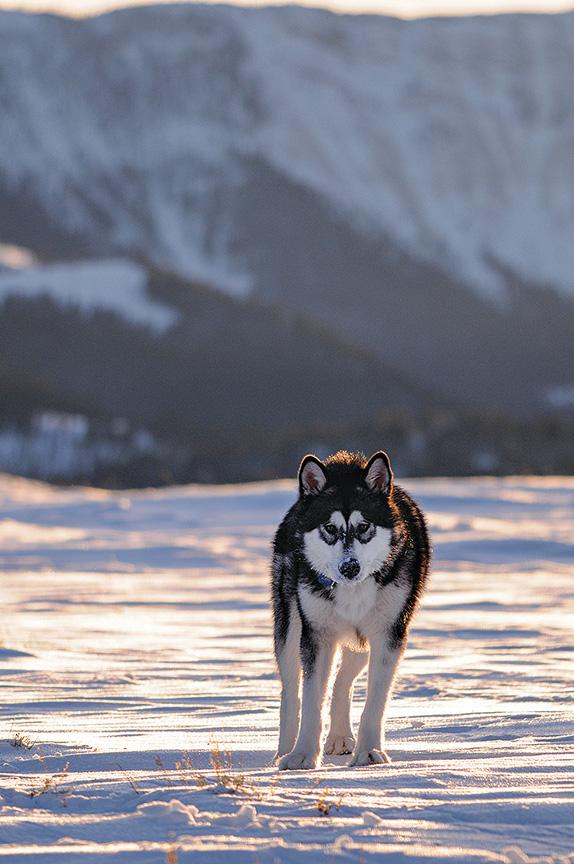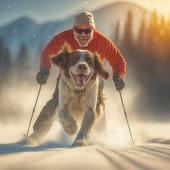Frostbitten
Canine considerations for cold weather.
While waxing your boards and sharpening your crampons, don’t forget your furry friends—use these tips to keep your pets safe and happy when the mercury drops.
1.) Minimize time outside during freezing weather—especially young and old pets, small animals, and short-coated breeds. If in doubt, leave your dog indoors; err on the side of caution if you are leaving for an extended time. Even northern breeds like huskies can be at risk due to lack of conditioning or lighter coat density. Injuries such as frostbite or hypothermia can happen quickly, especially in below-zero weather. Extremities such as tails, noses, paws, and ear tips are the most susceptible to injury.
2.) If you elect to bring your dog on outdoor adventures, check frequently for signs of pain or discomfort: extremities that are bright red or feel cold to the touch, stopping and sitting down, lifting paws one at a time, and whining or agitation. These are signs to get them inside as soon as possible, and to rub the body part vigorously to rewarm it and restore circulation. If you are away from veterinary care, use lukewarm water to warm the part—but ONLY if you are in a warm and dry location, such as a cabin with a woodstove. Never use hot water and always seek veterinary care if the body part continues to be painful or discolored. Do not ignore the early signs—pets can and do lose limbs to frostbite.
3.) It’s also important to be mindful of more abstract seasonal temptations and risks. Keep pets on leash if they are prone to wandering—a simple slip into a treewell or icy creek can be deadly. Conversely, dogs that insist on being near you may crowd your ski tails and sustain serious lacerations. Adding to the danger, if your dog becomes stuck or injured, it will have less ability to stay warm, compounding the problem. If your pet is in pain or injured, be sure to seek veterinary care quickly.
4.) The most important thing is to make your pet’s wellbeing a top priority in winter. One of the best things about living in Bozeman is there are many opportunities available to share our pastimes with our canine companions—but not every trip is appropriate. Owners should be prepared to respond to minor mishaps with basic first-aid materials, food and water, and the ability to change plans or return home if the situation gets too hairy (pun intended). Make sure the objective is within your dog’s physical abilities: if you’re planning a 4,000 vertical-foot day of skiing in the backcountry, but your pooch is a 140-pound mastiff that can’t outrun the neighborhood squirrels, it’s probably best to leave Trigger in his usual spot in front of the fire, where he will be happy and warm, and ready to greet you when you get home.
Michelle Pogge is a veterinarian at Bozeman’s Banfield Pet Hospital.











